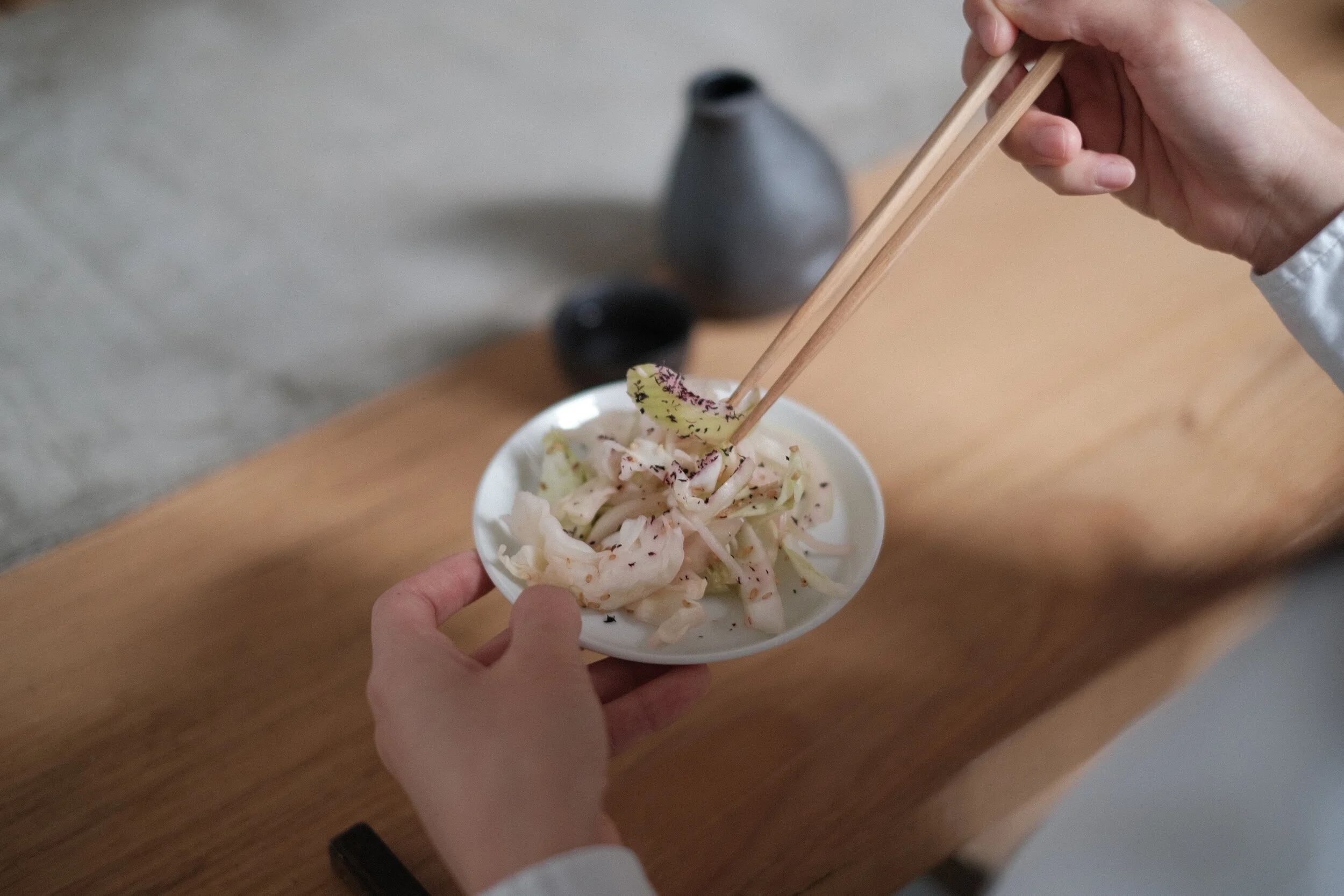Easy and delicious! Japanese pickles: Tsukemono
Tsukemono is one of the typical Japanese dishes. We often make it at home. It is really easy to cook, so I will introduce a recipe to you at the end. Please check it out.
WHAT IS TSUKEMONO?
Tsukemono is Japanese pickles. Umeboshi (Japanese pickled plums) is one of the famous tsukemono. Tsukemono often comes with traditional meals such as Ichiju-sansai (一汁三菜). It is also known as Hashi-Yasume(箸休め) which means the refreshing food during the meal like a palette cleanser and also used to compliment alcohol drinks.
Tsukemono is also one of the food storage methods, where vegetables, seafood and fruits are pickled in salt, vinegar, and fermented rice bran bed.
There is a benefit to pickling vegetables. When vegetables are heated, the vitamins will be destroyed, so tsukemono is a really good way to eat vegetables because it can keep the nutritional benefit and you can easily eat vegetables that are difficult to eat raw like eggplant and Chinese cabbage.
THE THREE OF POPULAR TYPES OF TSUKEMONO
Let me introduce three types of tsukemono that are common in Japanese homes.
1. ASA-ZUKE
The vegetables are pickled in seasoning (salt, soy sauce) over a short time, Suitable vegetables include eggplant, cucumber and Japanese white radish.
You can enjoy the texture of the original ingredients when it’s pickled in a short time and is a great place to start making tsukemono.
2. SHIO-ZUKE
This is a method where it’s pickled using salt. It means vegetables can keep for a long time because salt can prevent fungal growth and acts as a natural preservative.
Umeboshi (Japanese pickled plums) is made by shio-zuke. Suitable vegetables are carrot, Chinese cabbage, and Japanese white radish.
3. NUKA-ZUKE
It is made by fermenting vegetables in rice bran. It has a unique taste and smell due to fermentation. This is harder to make than the other two tsukemono because you need to stir Nuka (rice bran) every day to aerate and continue the fermentation process. However, nukazuke is my favourite tsukemono, it’s addictive. You can buy nuka at an Asian supermarket. Suitable vegetables are cucumber, Chinese cabbage, and eggplant.
LET’S MAKE TSUKEMONO! HOw to cook daikon pickled in Soy Sauce
Cooking time: 10 minutes
INGREDIENTS
250g Japanese white radish
SEASONINGS
50ml soy sauce
50ml mirin (Japanese sweet rice wine)
50ml cooking sake
9g salt
METHOD
1. Peel daikon and cut into quarter-rounds to 1 cm width.
2. Put it plastic bag or storage container and add all seasonings.
3. Mix them well.
4. Leave in the fridge for half a day.
5. All done! You can enjoy it for up to 1 week. Please keep it in the fridge.
It is so easy, right? It is also good to put them in fried rice so please try it at home!
Tsukemono is really healthy and a delicious way to eat vegetables. We will try to make different type of tsukemono, we will share it with you when it’s ready!
Writer: Yuki Takatani
Reference:
*1 漬物の種類は何で決まるの? 漬け方別のおすすめ食材&使用レシピ
*2 漬け物ってどんな種類があるの?野菜はどう選ぶ?わかりやすく解説!







